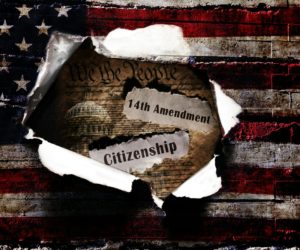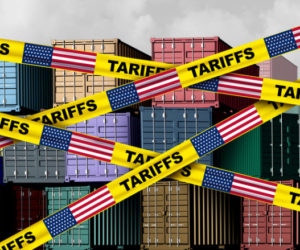

In 1966, the wave of liberal optimism over the civil rights movement and the Great Society began to dissipate. Cities in the North and West faced riots and white flight. Student movements grew increasingly radical over the Vietnam War. The social fabric seemed to be unraveling.
The Republican Party, licking its chops after the 1964 Goldwater fiasco, discovered that discontent over Kennedy-Johnson liberalism might bear electoral fruit after all. Two elections illustrated this: Ronald Reagan’s gubernatorial victory in California and Charles Percy’s defeat of Paul Douglas in the Senatorial race in Illinois. Douglas was tarred with the unpopularity surrounding the Open Housing movement in Chicago . Though Percy was a liberal Republican, he drew support from angry white voters fleeing Chicago and its growing crime rates. Reagan was a more ideological figure, of course, and made the Free Speech Movement at UC-Berkeley a rallying issue for California conservatives upset with growing campus radicalism.
By 1968, these sorts of campaigns coalesced into Richard Nixon’s successful “Law and Order” campaign, which, combined with George Wallace’s Independent effort, made social liberalism an electoral albatross for the Democratic Party. George McGovern merely confirmed this “liberal takeover” of the Democratic Party in 1972, making himself an easy target for Nixon’s “Silent Majority.” While Jimmy Carter pledged to return Southern white evangelicals to the fold in the national Democratic Party, he did little to dissociate his party from social liberalism surrounding questions of race, sexuality, drugs and welfare policy. Reagan’s ascendancy to the White House demonstrated the value of social conservatism as a political cudgel to win broad electoral victories for the GOP. Only by moving to the right on social policy did Democrats take back the White House in 1992, though they faced an even more ideologically and socially conservative Republican opposition based in the evangelical South. As old issues faded – crime’s sudden drop in the late 1990s removed many of the racially-tinged topics from the national conversation – new cultural issues replaced them. Like opposition to gay marriage, which helped secure George W. Bush’s re-election in 2004.
Coupled with the political fruits of social conservatism was a broad evangelical revival, often described as a Fourth Great Awakening, and one that created armies of loyal and dedicated foot soldiers for the Republican Party. Though drug policy was less a wedge issue than in the crack epidemic and the days of Just Say No, few politicians dared associate themselves with reform beyond medicinal marijuana. By 2004, Bushian social conservatism seemed as strong as ever.
But then things started to change, and very quickly. Polling evidence showed a dramatic increase in support for gay marriage. Support for the death penalty declined (though not enough to support outright abolition yet). And legalization of marijuana for recreational purposes suddenly gained respectability. The increasing number of Americans defining themselves as belonging to “no” religion and the rise in unmarried voters only added to the sense that America was becoming increasingly comfortable with a secular and socially diverse order. These changes were happening everywhere, though more quickly in the West and Northeast. Most importantly, younger voters in the Millennial generation had embraced social liberalism as normative, where even many young evangelicals have called for inclusion of issues like the environment and poverty in the political conversation. Abortion remains as divisive and static as ever, but calls for outright bans continue to draw rebuke from voters.
In fact, what’s most amazing is that these very issues that once helped to rally conservatives to the polls and “vote against their economic interests” are now more effective in drawing liberals to the polls. Social conservatism has been increasingly marginalized in American society and politicians are gaining much less traction pushing these issues. The passage of two marijuana legalization measures – in Colorado and Washington – and referendum support for gay marriage in four states shows that the days of GOP culture war wedge issues is coming to an end.
The exit polls even show a historic rise in the number of self-described liberals to an all-time high. It was 25 percent this time vs. 22 percent in 2008. The electorate is increasingly younger, less white, and more liberal – even as more conservative whites abandoned Obama for Romney.
What this means going forward is anyone’s guess. But social liberalism has clearly ended its 46-year run as bogeyman and rallying point for a nationally engaged electorate. There will still be 2010-style low turnout off season elections when Democrats are demoralized. And particularly bad Democratic candidates in the future might turn off even new liberal voters from the party. But the broad assumption of a center-right nation that is socially conservative at its core is no longer tenable. The ideological divide is now: 25% liberal, 35% conservative and 41% moderate – where moderates and liberals vote overwhelmingly for Democrats. Some of this involves foreign policy and traditional support for entitlements like Social Security and Medicare. But much of it is about cultural issues that, for the first time, seem to be of political benefit to the Democratic Party.
















